Great Danish Designers 101: Hans Wegner
Although he designed many types of furniture, Hans Wegner was best known for his chairs. He designed more than 500 of them, with many still produced today. Wegner had very specific ideas about chairs, paying heed to comfort and craftsmanship, but also to aesthetics. He famously stated that a “chair is to have no backside. It should be beautiful from all sides and angles.” (AZ Quotes) As we will see, he followed his own advice, and was eventually recognized for creating the world’s most beautiful chair.
Hans Wegner: Tireless Pursuit of the Perfect Chair
The son of a cobbler, born in Tønder, Denmark in 1914, Wegner apprenticed as a carpenter before moving to Copenhagen. He trained at the Technical Institute in Denmark’s capital and then attended the School of Arts and Crafts, graduating in 1938. Two years later he joined the architectural office of Arne Jacobsen and Erik Møller where he helped design furniture for the Aarhus City Hall, known then and now as a “classic example of Scandinavian modernism.” (ArchDaily)
By 1943, Wegner had opened his own office and began working on a series of chairs that would later be known as the “Chinese chairs.” Like other Danish designers of the mid-century period, Wegner looked to the past for designs he could re-interpret. In the case of this first series of chairs, it was ancient China that inspired him. His Wishbone chair was the most famous among these early designs. It recalls Ming furniture produced in fourteenth-century China and, according to many sources, is Wegner’s most commercially successful design. (Wilhide, Carl Hansen, DanishDesign.com) The Wishbone is still produced by Carl Hansen today. An original is shown below:
Image from 1stdibs.
Elizabeth Wilhide, author of Scandinavian Modern Home, described the Wishbone as an example of Wegner’s “mastery of form,” noting how the curve of the back legs is echoed in the semicircular top rail and wishbone shaped back support. Similar design elements would appear in Wegner’s later chairs, including the Peacock.
An adaptation of the classic Windsor chair, the Peacock was first produced in 1947 and debuted at the annual exhibition of the Cabinetmakers’ Guild of Copenhagen. Technically known as the PP550, the more poetic “Peacock” name was supposedly bestowed by noted designer Finn Juhl, in reference to the fan-shaped slatted back rest. Always designing with comfort in mind, Wegner improved the slats, which were traditionally just round dowels, by flattening them at the exact point where the shoulder blades meet the chair:
Image from 1stdibs.
Wegner was a presence at every Cabinetmakers’ Guild exhibit from 1941 until 1966, debuting a new chair each time. Wilhide credits Wegner’s “tireless pursuit of the perfect chair form” as a driving force behind his work. Many say he found perfection, or something very close to it, in the PP501/503, also known as the Round Chair. Initially produced in 1949, the Round Chair was nicknamed inadvertently when Wegner asked an assistant to bring a chair to him from his design studio. When the assistant asked which one, Wegner replied very simply, “the round one.”
This seemingly simple design brought Wegner international fame. In 1950, the American magazine Interiors featured the Round Chair on its cover and called it “the world’s most beautiful chair.”
The presence of the Round Chair in the first televised US presidential debate between Kennedy and Nixon only added to its reputation:
Image from API Images.
It is still regarded as a landmark design today. In its review of Wegner’s most iconic designs, Dwell magazine is effusive in its praise of the Round Chair, saying it is:
“minimalist art reduced to its bare essentials. It required incredible craftsmanship to create such smooth curves—each of the crescent-shaped armrests are fashioned from a block of wood, and interior mortise-and-tenons hide the connection between the arms and legs.”
In his book Scandinavian Style, Bradley Quinn commented on the elegance of the design, seen in the way the armrests and back merge gracefully into one another. And Elizabeth Wilhide talks about the “minimal use of material, exquisite craftsmanship and refined form” that give the chair a timeless quality. In her assessment, Wegner reached his ultimate goal with the Round Chair, since it is, indeed, beautiful from all angles. The images below, of a Round Chair from VHB’s collection, show all of those angles:
Images from Vintage Home Boutique.
The Round Chair was originally produced by Johannes Hansen, a small Danish furniture manufacturer with whom Wegner worked very closely. While it was common for Danish designers to collaborate with manufacturers, Wegner was “unusual” in that he worked alongside the company’s skilled craftsmen to fine tune his designs, rather than leaving them to figure out the technical details. (Wilhide)
Wegner’s relationship with Johannes Hansen was a fruitful one. Along with the Round Chair, Johannes Hansen produced the Peacock and the PP512, a chair that combines several traits of Danish mid-century design. It was streamlined and minimalist, used organic materials (wood and cane), and was highly practical since it could be folded and hung on the wall, as the reproduction below demonstrates.
Images from twentytwentyone.
It was also with Johannes Hansen that Wegner designed the Ox Chair, a significant shift in direction for the designer. Known to “revere” wood, Wegner was apparently inspired by Picasso’s drawings of bulls when he created this dramatic armchair with ox hide and chromium-plated steel legs:
Image from 1stdibs.
As the Ox Chair shows, Wegner was known, on occasion, to have a little fun with his designs. Several years before the Ox Chair came to be, Wegner had re-imagined the wing chair. His thoroughly modern take on this very traditional piece was playful in appearance but also showed his commitment to human-centred design. As Wilhide notes, Wegner believed that a chair should “not impose a single posture” but allow people to be comfortable in any position they choose. The AP 19 fit the bill. This chair became known as the Papa Bear chair after a critic commented that the arms look liked paws reaching around to hug the person seated in it.

Image from Vintage Home Boutique.
Also known as a “witty” design was the multi-purpose Valet chair, which provided seating but also served as a place to hang a man’s suit. (Wilhide) The backrest is in the shape of a coat hanger, and pants could be hung on a rail at the edge of the seat which lifted to reveal more storage. The reproduction, below, shows all of the storage options and the detail of the unusual back:
Image from PP Møbler.
Beyond seating, Wegner created many other types of furniture with a wide range of Danish manufacturers. The bar bench, below, is another well-known design made by Johannes Hansen:
Image from 1stdibs.
Sleek storage solutions were always important to Danish mid-century designers and Wegner was no exception. He created many sideboards, some with distinctive elements that added flair and visual interest. His Model 20 sideboard was one of his most popular. The two-level construction sets it apart from others of the period:
Image from scandinavianmod.com.
The CH 304 sideboard was originally made by Carl Hansen, a Danish company that still produces Wegner designs today. The crossed legs have brass supports, giving this piece a very unique look:
Image from 1stdibs.
Wegner was so prolific that it is nearly impossible to capture all of his designs in one article. With such a large volume of work, it is no surprise that he won several prestigious awards in his lifetime, from the Lunning Prize and the Grand Prix at the Milan Triennale in 1951 to an honourary doctorate from Royal College of Art in 1997. He continued to work into his eighties, and passed away in 2007 at the age of 92. His designs live on in modern reproductions, and many are featured in museums around the world, including the Museum of Modern Art in New York.




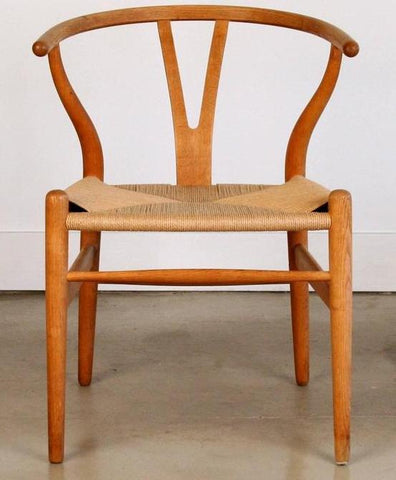
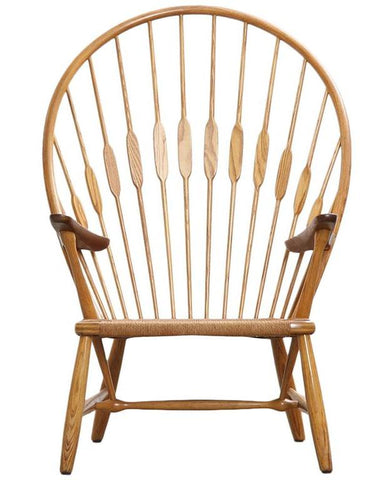
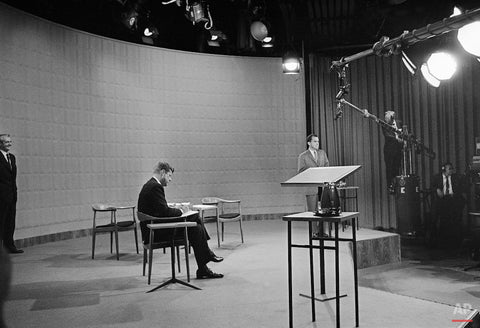



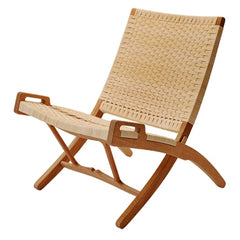




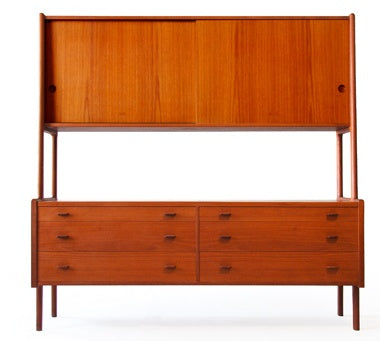

Leave a comment